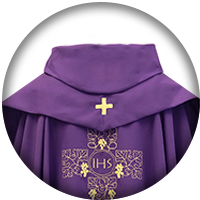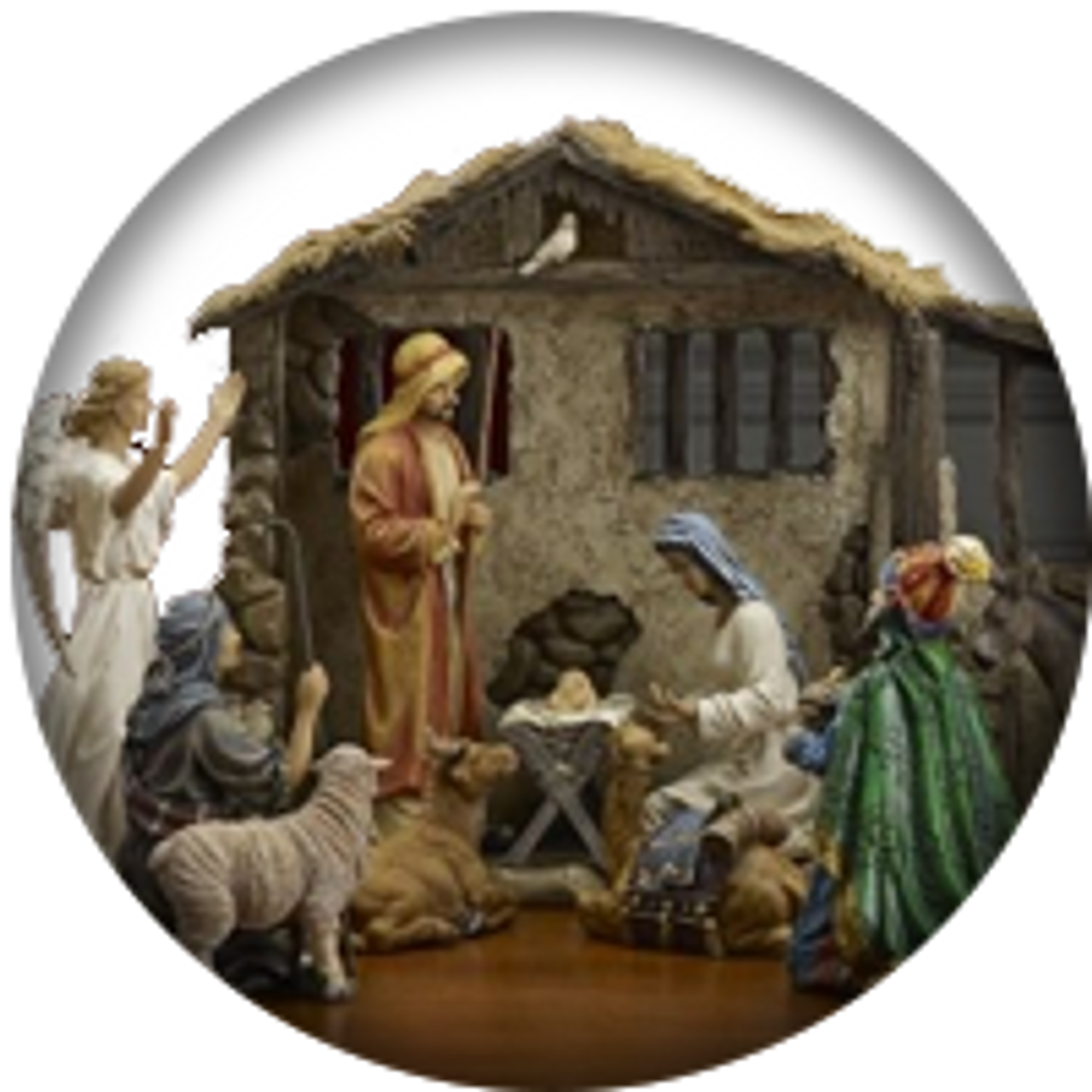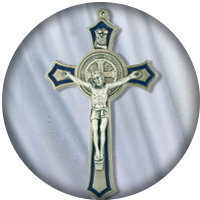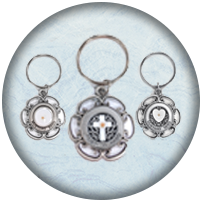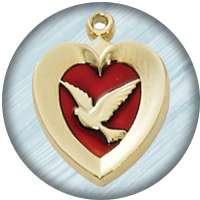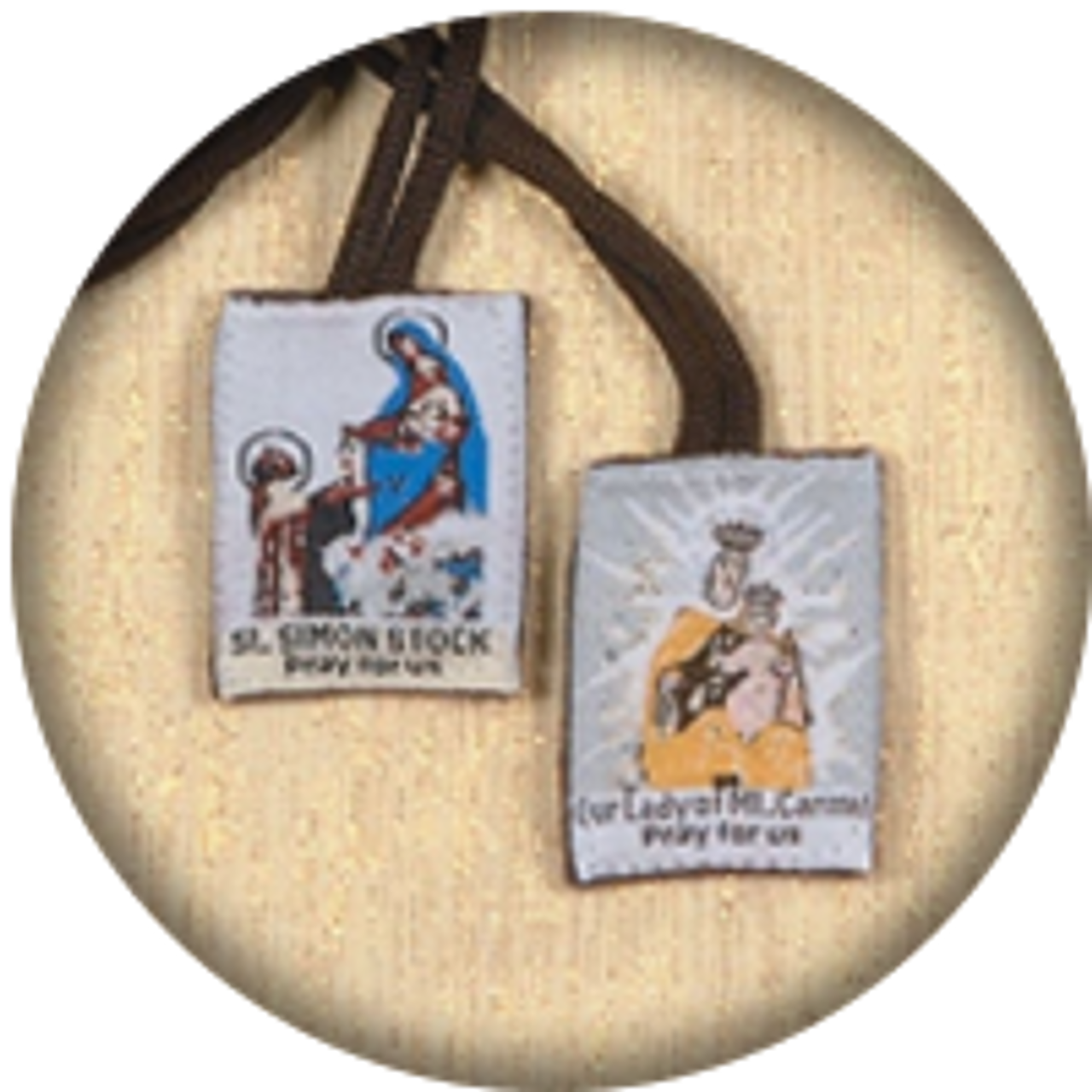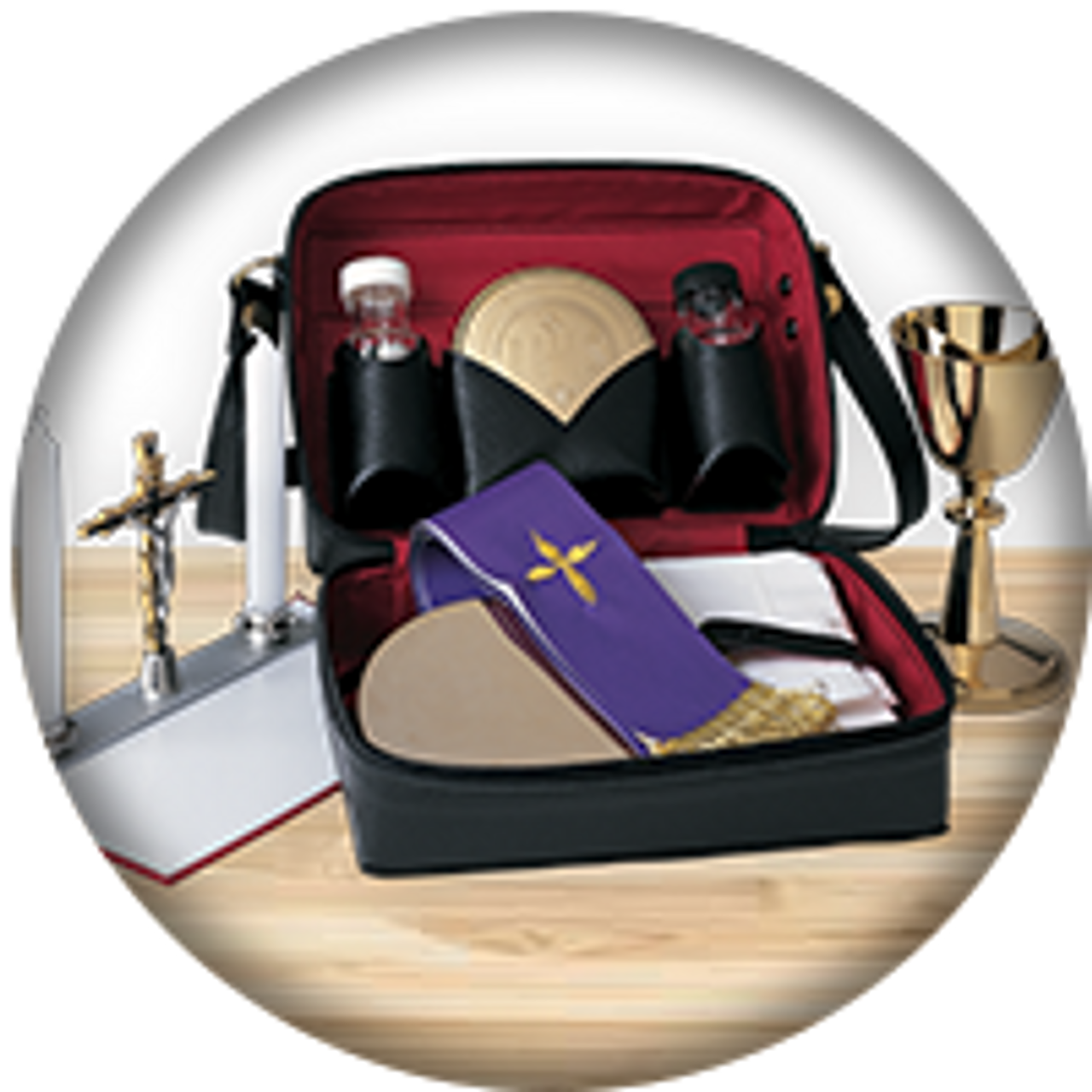ST. PIO AND ST. MICHAEL—SEPTEMBER SAINTS
Kathy Boh on 29th Sep 2016
ST. PIO AND ST. MICHAEL
SEPTEMBER SAINTS
ST. PIO OF PIETRELCINA--PADRE PIO, 1887-1968
On September 23, we celebrate the feast day of St. Pio—for so many years known, simply, as "Padre Pio”. Born “Francesco Forgione” in the small, picturesque town of Pietrelcina in south central Italy, he was a seriously devoted and fervent child of God. At age 14 he felt the call to be a Capuchin monk, and entered the Order of Capuchins as a teenager. Formation and study years found him at several locations, but sometime after becoming a priest, he ended up at the Capuchin monastery of San Giovanni Rotondo, where he spent most of his life. He was active as a friar-priest for over 65 years.
It has been noted that his character and virtue were as much or more a sign of a vibrant Christian life than his more visible and publicly acclaimed signs and charisms for which he was well known. The stories abound regarding his devotion to the love of God, love of his fellow friars, and his vows of obedience, poverty and chastity.
Simply described, he was a man of prayer and suffering. He believed enormously in intense prayer, and knew the necessity of radical suffering for souls. Padre Pio was well aware that our eternal lives had been bought at the high price of Jesus’ blood and suffering. (At the age of 20, he began seeing visions of the Passion. At around age 31, his stigmata began.) 1 Saints Peter and Paul refer to partaking in the sufferings of Christ in the books of Romans, 2Corinthians, Philippians, Colossians, Hebrews, and 1Peter.
While some may assume that Padre Pio had sought to be, specifically, a stigmatic, he actually had not expected the stigmata to come. He did not realize until his 1918 apparition of Jesus was over that he had been left with the wounds of Christ. The details are as follows:
During this apparition, Padre Pio was in “a conversation with Jesus” and Jesus was “lamenting the ingratitude of men, especially those consecrated to him, and by him most favored… He invited me to partake of his sorrows and to meditate on them: At the same time he invited me to work for my brothers’ salvation… and I asked him what I could do… I heard the voice, ‘I unite you with my Passion’. Once the vision disappeared, I came to, I returned to my senses, and I saw these signs here, which were dripping blood. “2
An esteemed priest-professor (who was the historian for the Pope John Paul II beatification process)3 wrote a book presenting the secret Vatican files on the three-year investigation into Padre Pio’s life when St. Pio was in his thirties.
The book is called: PADRE PIO: UNDER INVESTIGATION, Secret Vatican Files, by Fr. Francesco Castelli (a professor of Modern Church History in Taranto, Italy.)4 The book is translated from the 2008 Italian version of the original 1921+ report, called “Votum” [the “Acts”]. The file documents dated before 1939 were made publicly accessible by Pope Benedict in 2006. 5
This book is a gripping account of the original Vatican inquest and report that began in 1921—three years after Padre Pio's stigmata began. The book is an interesting, understandable and readable account, with clear and detailed explanations all along the way. This astute,insightful, erudite author reveals an earlier vision of Padre Pio that sheds much light on the purpose and mission involved in St. Pio’s stigmatic suffering.
Padre Pio was long accustomed to deep prayer times. St. Pio had an occasion in 1913--5 years before receiving the stigmata vision--when Jesus also appeared... and Jesus was "in distress". The saint wrote in a letter to another priest:
“’On Friday morning I was still in bed, when Jesus appeared to me. He looked all battered and disfigured. He showed me a great multitude of priests, regular and secular, among whom many [were] ecclesiastical dignitaries; some were celebrating, some were putting on the sacred [vestments], and others were taking them off. 6
The sight of Jesus in distress was very painful to me. His glance turned toward those priests…and when he looked back at me…I saw two tears running down his cheeks… He moved away from that throng of priests with an expression of great disgust on his face, crying, ‘Butchers!’ [blog comment: One English dictionary meaning of 'butcher' is 'one who bungles or botches' (Webster)]
And looking at me he said: ‘My son, do not think that my agony only lasted three hours, no; I will be in agony until the end of the world, on account of the souls whom I have most blessed.
During the time of my agony, my son, it is necessary not to sleep. My soul keeps looking for a drop of human compassion, but, oh, they leave me alone under the weight of their indifference. The ingratitude and the sleep of my ministers make my agony even more burdensome. Oh, how badly they return my love! What torments me most is that, to their indifference, those people add their contempt, their incredulity. How many times I was about to strike them, if the angels and souls who love me had not stopped me.’” 7
Father Castelli then summarizes Padre Pio’s mission and purpose of his stigmata, including the statement: “…[H]is offering for the salvation of his brothers is the main feature of his life and of his mission as a stigmatic priest.” 8
St. Pio knew his dedicated intercessory prayers and excruciating suffering contributed to many people coming to know his Lord. And, as Jesus suffered for us, in place of us, Padre Pio suffered for his brothers. Later in his life, he started prayer groups to help others learn deeper prayer for souls. Shortly before his death, he celebrated the 50th anniversary of his stigmata with an international meeting of his prayer groups—some of which have carried through even to the present day. St. Pio died in 1968 and was canonized by Pope John Paul II in 2002.
ST. MICHAEL THE ARCHANGEL
SEPTEMBER 29, 2016
Both St. Pio and St. Francis of Assisi made pilgrimages to the St. Michael shrine in the Gargano mountains for his intercession and protection. St. Pio had a very active devotion to St. Michael and to his own guardian angel, with whom he was on intimate terms. He was known to both communicate with and see angels, both in connection with his own life and the lives of others.
St. Pio might have been drawn to the powerful St. Michael the archangel because of his own experience of harassment from the devil, beginning at age 4 years old. 9 (Please see footnotes 10—14 below for further details.)
The warrior angel, Michael the archangel, is quite active in scripture. He is seen in Daniel, chapter 10, as an angelic messenger who came to Daniel. He is referred to in Jude 9 (in reference to a dispute with the devil over Moses’ body) and in Rev. 12:7 (where Michael is referenced as leading the good angels in driving the devil and his demons out of heaven.) Dan. 12:1 says, “At that time there shall arise Michael, the great prince, guardian of your people…[in] a time unsurpassed in distress…”
Michael the great warrior angel is considered the patron of many, including travelers, policemen, firemen, servicemen, and others who regularly face potential danger. He is a warrior against the forces of evil, with whom Padre Pio contended on a regular basis (as did St. Patrick, St. John Vianney, and many other saints--known and unknown).
May we be encouraged by these heroic saints who were and are mighty in the power of God to intercede and fight--both for our protection and for the deliverance of souls even today.
St. Michael’s feast day is September 29th, along with the archangels Gabriel and Raphael.
(adapted, in part, from our blog on Padre Pio, September 18, 2014)
FOOTNOTES:
1. PADRE PIO: UNDER INVESTIGATION, The Secret Vatican Files, by Fr. Francesco Castelli, Ignatius Press, San Francisco, 2011, p. 277.
2. Ibid., p.40.
3. Ibid., cover.
4. Ibid.
5. Ibid., p.4.
6. Ibid., p.41-42.
7. Ibid., p.42.
8. Ibid.
9. Ibid., p.276.
10. Ibid. Padre Pio’s own experience of harassment from the devil, began at age 4 years old. This evil power appeared “often threatening, ominous, and terrifying”. “It was a torment to see the light put out and every night left to the mercy of these visions. It was at the age of 5 or 6 that he consecrated himself to the Heart of Jesus, when it appeared to him above the high altar.”
11. Ibid., p.277-9. “The trials from Satan began when he was ten. During the year of [his] novitiate [in the Capuchins], the vexations suddenly ceased.” “Satan’s physical vexations [renewed] around his first year of priesthood… insults, threats, beatings.” He was ordained in 1910… “[Satan][was] not succeeding in his intent of turning him away from God, from prayer, etc.” His body suffered in several other ways, too.
12. Ibid., p. 277-8. It was a real blessing to also experience vivid pictures in his imagination (from around the age of 20) of the Holy Family and their affection for one another.
13. Ibid., p.279. In 1919, (a year after the stigmata wounds began) he “experienced the tortures of hell in seeing the suffering of the damned… [even]the pain of loss '[that is, the pain of having lost God]'.”
14. Ibid., p. 280. Not long after this, St. Pio experienced “[s]everal appearances of the Most Holy Trinity—admonitions to be more merciful than ever with souls—assurances regarding his anxieties, doubts and trepidations—revelations about souls in need of being reproached, exhorted, etc.”

